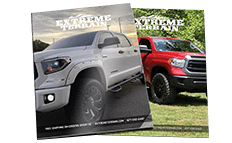
Talk to a Tundra Sales Tech
1-877-870-8556
M-F 8:30A-11P, Sat-Sun 8:30A-9P

How does a Winch Work?
Eric has you covered with some great tips and a demonstration on how to use the winch in a safe way. A winch isn’t like bolting on a new grab handle accessory and calling it done. A winch might actually save your life one day on the trail, so it’s important you have at least a basic understanding on how to use it.
Picking out the best winch for your Jeep based on the way you trail can be somewhat complicated. But once you’ve chosen the one that’s going to be perfect on your ride, the next step is to get it home and installed. Hopefully, you’ve got a few Jeep buddies to help with that. Once the winch is in place, the question becomes: what’s the best way to use this new tool? Eric has you covered with some great tips and a demonstration on how to use the winch in a safe way. A winch isn’t like bolting on a new grab handle accessory and calling it done. A winch might actually save your life one day on the trail, so it’s important you have at least a basic understanding on how to use it. Don’t worry though, this demonstration is easy to master. We don’t expect you to fire up and join the next Camel Pro Offroad series in the dense jungles of South America. But you can recover your Jeep, and maybe a friend’s Jeep out of a tricky situation. Jeep Winch Basics There are two kinds of winches you will hear about. A hydraulic winch, that runs off the power steering system in some way, and an electric winch. The electric winches are the more common ones. Hydraulic winches traditionally don’t work unless the engine is running. So if you’re stalled, or deep in the water with a dead engine, the winch won’t be much use. The higher-end electric winches will work under water too (as long as your battery has power).All winches are basically the same most of the time, and share the same components. They will have steel cable or a synthetic rope on the drum. One end of the winch housing will feature an electric or hydraulic motor. The other end will have the gear casing, and a clutch actuator to engage the winch. It’s commonly a lever you pull up and/or twist to engage by hand.For an electric winch, you’ll usually see the solenoid box on top somewhere. This connects the battery to the electric motor in the winch. It also has the connections for the wired remote so you can operate the winch electronically, while standing a safe distance away. Winching Tools and SafetyWhile winching, you should be wearing safety glasses. It’s also recommended you have a good set of gloves so you can handle the cable or rope on the winch. You’ll be spooling the rope/cable by hand, and the gloves will protect your fingers, and give you a better grip. This is especially important on cable lines, which can sometimes have frays that might tear up an unprotected hand.When recovering with a winch line that needs to be attached to a tree, always use a tree trunk protector. Many companies offer recovery bags for winching, and they come chocked full of useful gear and tools to make winching a quick and safer job.Using Your WinchWhen you’re ready to winch, check your surroundings. Be aware of how you will be winching and the best way to go about it safely. Then you can put the winch in free spool mode with the clutch actuator, and drag out some line.Make sure there are no tools or gear on the hood or underfoot. Place them safely out of the way. Connect your remote up to the winch itself using the plug hookup on the winch's casing.Using the remote, winch out the slack out of the line between the tree and your Jeep slowly. The line should be up off the ground. This is an appropriate time to add a winch line dampener. This safety device can help absorb any kinetic energy if by accident the cable or rope breaks. It’s also highly visible so others in the immediate area know there is a line being used and they should stay back.Once you’re ready to start winching, make sure you are in a safe position. If winching downhill, you don’t want to be behind the vehicle. If facing a downhill slope, standing off to one side of the vehicle would be best. Most winch companies give you around 12 feet of wiring to the remote, so use as much as you can for safety. Double check your surroundings again. Now you’re ready to winch! Start slowly and spool in the line. If you close in on the winch dampener about halfway, you can stop winching, move the dampener up the rope/cable, and continue winching.
